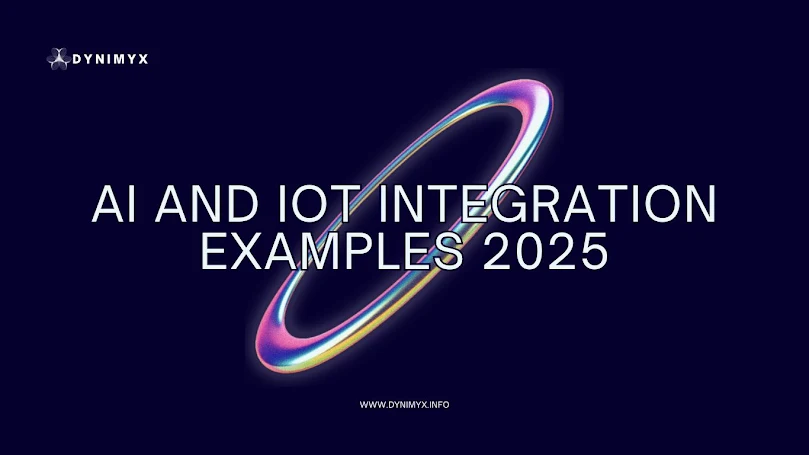1. Overview
By 2025, the Internet of Things (IoT) and artificial intelligence (AI) will have seamlessly combined to redefine technical standards and provide previously unheard-of advances in almost every facet of daily life. We see previously unthinkable automation, personalization, and predictive insights when AI's sophisticated analytical powers combine with IoT's fine-grained data collection. The most significant applications of AI-IoT integration in 2025 are examined in this article.
2. Solutions for Smart Homes
2.1 Energy Management Activated by Voice
The Nest Learning Thermostat and other AI-enabled thermostats do more than just regulate the temperature. They analyze real-time data from IoT sensors, which measure occupancy, light levels, and humidity, to optimize home environments on their own. This method can drastically cut carbon footprints and energy costs by 20–30%.
2.2 Appliance Predictive Maintenance
Vibration, motor current, and temperature are performance parameters that are continuously transmitted across IoT networks by contemporary refrigerators, washing machines, and HVAC systems. By analyzing data streams, AI models can identify possible issues before they arise, reducing maintenance expenses by up to 40% and increasing the lifespan of appliances.
3. Innovations in Healthcare
3.1 Patient Monitoring via Remote
Heart rate, blood oxygen, and glucose levels are among the vital indications that wearables (smartwatches, continuous glucose monitors) transmit to cloud platforms through the Internet of Things. The vital "golden hour" is therefore preserved when AI-based anomaly detection detects life-threatening illnesses (hypoglycemia, arrhythmias) in real time, alerting doctors and patients immediately.
3.2 Intelligent Ambulance Mechanisms
Next-generation ambulances transmit patient vitals (blood pressure, ECG, and SpO₂) straight to hospital servers via onboard Internet of Things sensors. At the same time, AI-powered route-optimization algorithms evaluate traffic and road condition information to determine the quickest route, guaranteeing prompt care when you get there.
4. Use Cases in Industry and Manufacturing
4.1 Factory Predictive Maintenance
IoT sensors track the vibration, pressure, and temperature of every equipment. Remaining Useful Life (RUL) is then predicted by AI models, which significantly increases overall equipment effectiveness (OEE) and cuts unscheduled downtime by 50%.
4.2 Self-governing Robots for Inventory Control
LiDAR sensors and Internet of Things cameras enable warehouse robots to continuously map their surroundings. AI-driven path-planning algorithms avoid moving objects (carts, employees) to complete orders more quickly and precisely.
5. Farming and Intelligent Farming
5.1 Accurate Watering
Data is uploaded to the cloud by soil-moisture sensors placed across the fields. To arrange exact irrigation, AI algorithms compare this data with crop type and weather forecasts, saving 30–40% of water and boosting yields by 15–20%.
5.2 Monitoring of Crop Health
Every day, high-resolution imagery is captured by drones and IoT cameras mounted on the ground. Pests, illnesses, and nutrient shortages are identified by AI-driven picture recognition algorithms, which then send geotagged notifications to farmers' mobile apps for focused interventions.
6. Intelligent Infrastructure & Cities
6.1 Traffic Management Driven by AI
AI prediction models get real-time data from smart signals and IoT traffic cameras located around the city. These systems reduce average commute times by 25–35% by dynamically adjusting traffic lights and lane assignments based on forecasts of peak-hour congestion.
6.2 Conscientious Waste Management
IoT fill-level sensors installed in public trash cans send data straight to central platforms. After that, AI-based route optimization creates "just-in-time" pick-up schedules for collection vans, drastically reducing emissions and fuel consumption.
7. Automobiles & Transportation
7.1 Connected Cars with
Advanced Safety Metrics like tire pressure, braking force, and accelerator position are now transmitted by vehicles through the Internet of Things. To activate Advanced Driver-Assistance Systems (ADAS) like automated emergency braking and lane-keeping assist, AI models examine driver behavior (such as forceful braking or signs of tiredness) and environmental factors (such as wet roads).
7.2 Optimization of Fleet Management
Through IoT networks, commercial fleets transmit driver-hours logs, GPS coordinates, and engine performance data. Then, by optimizing delivery routes, maintenance plans, and fuel consumption, AI algorithms lower operating expenses by 15% to 20%.
8. Difficulties & Things to Think About
- Data Security & Privacy: Federated learning and end-to-end encryption are crucial protections against IoT endpoint vulnerabilities.
- Interoperability: It's still difficult to harmonize different vendor protocols (MQTT, CoAP, OPC UA). These problems can be lessened by implementing API-first designs and standards-based systems.
- Scalability & Latency: Edge AI nodes must be installed to provide real-time AI inference at scale, guaranteeing response times of milliseconds.
9. Trends for the Future (After 2025)
- Local AI model training without centralized data lakes is known as federated learning on edge devices.
- 5 G-Native AIoT Applications: Telesurgery and real-time VR/AR experiences are made possible by ultra-low latency and high throughput.
- AI-managed network nodes that can identify problems and reroute traffic on their own are known as self-healing networks.
By 2025, smart homes, industrial automation, and smart cities will all be transformed by the confluence of AI and IoT, which will raise user experiences, efficiency, and safety to unprecedented levels. Future developments in edge AI and standards-based frameworks will further increase the scalability and security of these integrations, changing daily living and business tactics.
FAQs:
- What is the confluence of AI and IoT?
- In 2025, which AIoT application cases gained the most traction?
- How do AIoT systems handle data security issues?
Using zero-trust architecture, federated learning techniques, and end-to-end encryption

